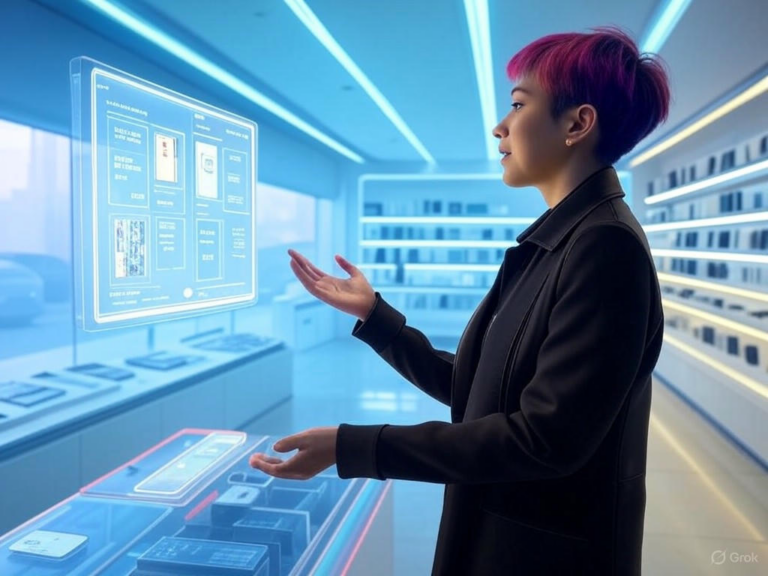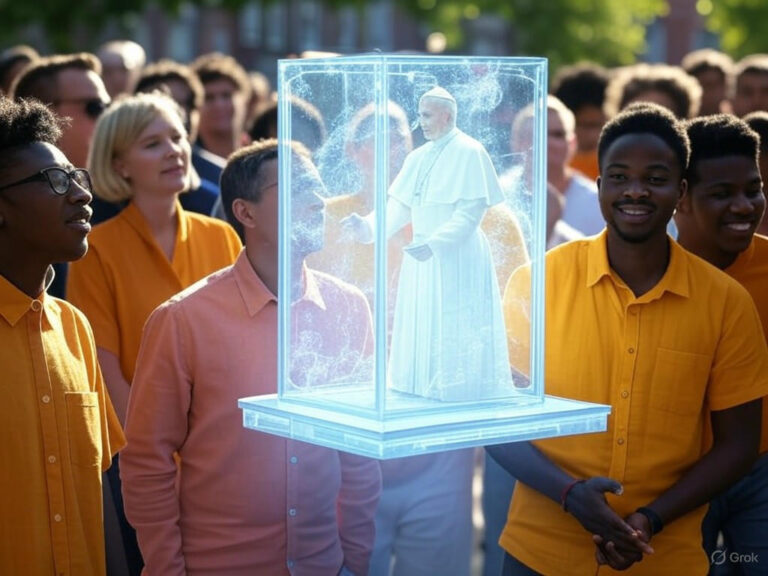
AI Accelerates Building Permits in California After Wildfires
California Deploys AI to Speed Up Wildfire Recovery
In the wake of the destructive Eaton and Palisades wildfires, California is turning to cutting-edge technology to make rebuilding faster and less frustrating. Have you ever wondered how AI building permits could change the game for disaster-stricken areas? Governor Gavin Newsom unveiled this initiative on April 30, 2025, aiming to slash approval times in Los Angeles from weeks to just hours, addressing the urgent needs of communities still reeling from the fires that destroyed around 11,000 homes and caused $29.7 billion in damage[6].
This AI-driven approach isn’t just about efficiency—it’s about giving families a quicker path back to normalcy. By partnering with innovators like Archistar, the state is deploying software that automates checks against zoning and safety codes, potentially transforming how we handle AI building permits in crisis situations.
How AI Building Permits are Revolutionizing the Process
The heart of this system lies in its ability to use advanced AI to review building plans almost instantly. Imagine submitting your home rebuild plans and getting feedback in minutes instead of waiting endlessly—what a relief that would be for those affected. This technology combines computer vision, machine learning, and automated rules to verify designs against local regulations, ensuring everything from zoning compliance to safety standards is met before it even reaches a human reviewer[1][2].
For homeowners and contractors, this means fewer surprises and delays. You can now run a pre-submission check on your plans, catching issues early and avoiding the back-and-forth that often drags out recovery. In places like Los Angeles, where wildfires have left scars, AI building permits are proving to be a lifeline, streamlining what was once a cumbersome bureaucratic hurdle.
Key Features of This AI Permitting Platform
Archistar’s platform is packed with tools that make the process intuitive and reliable. It offers real-time verification for code compliance, quickly spotting potential zoning violations or safety risks that could hold up your project. This isn’t just about speed; it’s about accuracy, reducing the chance of costly revisions down the line.
As an example, think about a family in Pacific Palisades trying to rebuild after losing everything—tools like automated plan analysis could help them get approved faster, letting them focus on healing rather than paperwork. Cities such as Vancouver, Seattle, and Houston have already seen success with similar systems, proving that AI building permits can work wonders in diverse settings[1].
The Power of Partnerships in AI Building Permits
This project thrives on collaboration, bringing together government officials and private companies to drive real change. Thanks to a public-private partnership, the AI tool is available for free to Los Angeles City and County, supported by groups like LA Rises, Steadfast LA, Autodesk, and Amazon[1][4]. It’s a smart move that shows how shared resources can accelerate recovery without adding financial strain.
Rick Caruso, Chairman of Steadfast LA, put it well: “Bringing AI into permitting will allow us to rebuild faster and safer, reducing costs and turning a process that can take weeks into one that happens in hours or days.”[4] If you’re involved in community rebuilding, this highlights how innovative partnerships could apply to your own efforts, making AI building permits a model for future collaborations.
Who’s Involved and Why It Matters
The key players—LA Rises, Steadfast LA, Autodesk, and Amazon—are contributing expertise and funding to ensure the system rolls out smoothly. This isn’t just tech for tech’s sake; it’s about addressing the real-world challenges families face after disasters. By leveraging these resources, California is setting a precedent for how AI building permits can cut through red tape and foster quicker recoveries.
Consider this: in areas like Altadena, where only a handful of permits have been issued amid a backlog, such partnerships could mean the difference between months of waiting and rapid progress. It’s a reminder that when public and private sectors team up, everyday people benefit the most.
Tackling Recovery Hurdles with AI Building Permits
Wildfire recovery in California has long been slowed by permitting bottlenecks, but this AI solution is changing that narrative. In Pacific Palisades, for instance, only a few homes are under construction while dozens of plans languish in review—AI is stepping in to clear that jam[6]. Governor Newsom has been clear: the old system isn’t cutting it, so we’re bringing in tech to boost efficiency and get people back on their feet.
What’s in it for residents? Faster approvals mean less time in temporary housing, lower costs from fewer revisions, and more transparency throughout the process. As Los Angeles County Chair Kathryn Barger noted, “This AI tool has the potential to save homeowners valuable time by helping them submit code-compliant plans from the start.”[2] If you’re in a high-risk area, adopting similar tech could be a game-changer for your community’s resilience.
Real Benefits for Those Rebuilding
Let’s break it down: shorter wait times, clearer processes, and cost savings are just the start. A hypothetical scenario might involve a family using the system to quickly verify their plans, avoiding denials and getting back home sooner. This AI integration not only speeds things up but also builds trust in the system, making AI building permits an essential tool for modern recovery.
Beyond that, it’s about empowerment—giving people the resources to navigate bureaucracy with confidence. In the end, these advantages could inspire other states to explore AI building permits as a standard practice.
Beyond Permits: A Statewide Strategy
This AI initiative is part of a larger effort by Governor Newsom to streamline regulations and remove obstacles in wildfire recovery. Executive orders have suspended some environmental requirements, paving the way for faster rebuilding across California[1]. Mayor Karen Bass and county leaders are on board, seeing it as key to achieving the quickest recovery on record.
One tip for anyone involved: stay informed about these changes, as they could apply to your projects. The plan even includes expanding the technology statewide, turning Los Angeles’ experience into a blueprint for other areas prone to disasters.
Expanding AI Building Permits Across California
This rollout starts in Los Angeles but won’t stop there—a new contract will make the tools available to more municipalities soon. Picture other wildfire-vulnerable regions adopting this system, drastically cutting permit times and enhancing community resilience. By sharing these successes, California could lead the way in making AI building permits a nationwide norm.
It’s not just about immediate fixes; it’s about building a more adaptive future. If you’re a local official or homeowner, keeping an eye on this expansion might offer valuable lessons for your own area.
The Bigger Picture of AI in Government
Looking ahead, this project could pave the way for AI in various public services, from healthcare to infrastructure. We’ve seen how AI complements human expertise in other fields, like healthcare diagnostics, where it speeds up routine tasks while experts handle the nuances[5]. In government, AI building permits might be just the beginning, opening doors to broader innovations.
Challenges like balancing automation with oversight are important, but as one study suggests, the best results come from AI supporting human decision-making rather than replacing it[5]. What do you think—could this approach revolutionize how we manage public services?
Ensuring AI Works Alongside Humans
Officials stress that this system enhances rather than replaces staff, focusing on automated checks so people can tackle complex issues. For example, in a busy permitting office, AI could handle initial reviews, freeing up experts for personalized advice. This balanced method ensures accuracy while embracing efficiency, making AI building permits a sustainable solution.
If you’re curious about implementing similar tech, start by assessing where automation could lighten your workload without losing the human touch—it’s all about smart integration.
What’s Next for This AI Initiative
Community feedback so far has been optimistic, with many seeing it as a beacon of hope after the January wildfires. While full deployment timelines are still emerging, the software is already in use to tackle backlogs, with training and resources on the way. Here’s a practical step: If you’re affected, check local sites for updates on how to use these tools effectively.
This rollout could set the stage for even more advancements, proving that technology and community needs can align perfectly.
Wrapping Up: Innovation for a Resilient Future
In summary, AI building permits are more than a technical fix—they’re a vital step toward faster, fairer recovery in California. By addressing key challenges and fostering partnerships, this initiative offers a roadmap for handling future disasters. As climate risks grow, tools like these could become essential, helping communities bounce back stronger.
What’s your take on using AI for rebuilding? We’d love to hear your thoughts in the comments below, share this with others facing similar issues, or explore more on our site about sustainable recovery strategies. Let’s keep the conversation going—your insights could inspire even more change.
References
- [1] Insider. “California Deploys Free AI Permitting Tool for Los Angeles Fire Recovery.” Source
- [2] SMMirror. “AI Tool to Speed Building Permits in Fire Recovery.” Source
- [4] Los Angeles Business Journal. “AI Tool for Rebuilding After Fires.” Source
- [5] OVRDRV. “SEO Techniques for AI-Generated Content.” Source
- [6] Homes.com. “AI Tool Promises to Speed Up Rebuilding After Los Angeles Wildfires.” Source
- [8] Hey SoCal. “State to Launch AI Tool to Help Speed Up Approvals for Fire Recovery.” Source
AI building permits, wildfire recovery, California rebuilding, Archistar software, permit automation, Palisades fire recovery, AI in government, disaster response technology, building permit streamlining, California wildfire recovery







